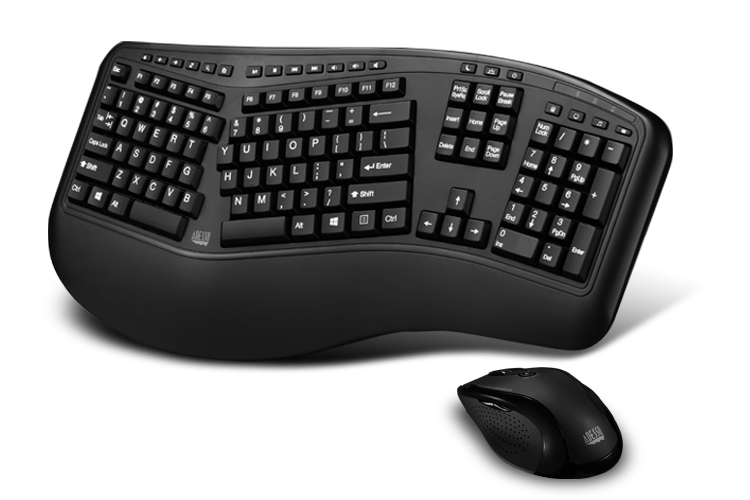

Because this is an unnatural position for your wrists, it causes discomfort, especially when typing over long periods of time. Promotes Wrist Comfort: When you use a flat keyboard with no palm rest, most people’s wrists are turned inwards.After a slight learning curve, you’ll be on your way to comfortable typing in no time. Your wrists rest at a more natural position and you’re able to more freely adjust your posture. When you put your hands on an ergonomic keyboard, you’ll immediately feel the difference between it and the flat keyboard you’ve probably been using. The Many Benefits of an Ergonomic Keyboard When talking about a home office, the most common ergonomic upgrades you can invest in are keyboards, of course, computer mice, and office chairs. Any item you use regularly that causes any sort of pain or discomfort probably has an ergonomic alternative. It's also a bit cheaper, but the build quality takes a hit, as this keyboard is fully plastic, while the Microsoft has a solid metal top plate.As you might have seen while shopping, the term ‘ergonomic’ can be applied to more than just keyboards.

#WHICH IS THE BEST WIRELESS ERGONOMIC KEYBOARD BLUETOOTH#
This unit has pretty much all of the same ergonomic features as the Microsoft board, but it comes with a USB receiver and supports multi-device Bluetooth pairing. In this case, we recommend the Logitech ERGO K860 Wireless Split Keyboard. So, if you're in a multi-device setup with a laptop or a tablet alongside your PC, you'll probably want something with a bit more versatility. However, the Microsoft keyboard only connects with one device at once using Bluetooth. Plus, with the soft, comfy wrist rest, your palms are well-supported as you flit over the keys during your daily tasks. Rather than two feet beneath the top of the board, the feet are actually on the side closest to you, so when you pop them out, your keyboard rests at a negative incline angle, which is intended to reduce strain in your elbows and forearms. It has a wave-like shape that descends into two clusters of keys, one for each hand. Thanks to its scissor switches, this keyboard is among the quietest that we've tested, making it a solid option for an open office or a noise-sensitive work environment. In this case, we recommend the Microsoft Surface Ergonomic Keyboard. If mechanical isn't your style, you can cut some of the costs off your purchase by opting for a scissor-switch unit. You can use the two halves separately or put them together to make one compact keyboard that offers an excellent typing experience and incredible comfort. This little guy is also a fully-split, mechanical unit with an extremely comfortable wrist rest. However, this keyboard takes up a lot of space on desks due to the extra macro and navigation keys, so if you're looking for something smaller and don't mind losing those keys, the Dygma Raise is another great option. You can also get this keyboard with clicky Blue or linear Red switches, both of which are fairly light to type on and offer a slightly different typing experience. Plus, the Cherry MX Brown switches in our unit are light to press, so you're less prone to finger fatigue.

Although mechanical keyboards tend to have a less ergonomic, high profile, the attached wrist rests do a good job of propping your wrists up high enough so you can easily reach the tops of the keycaps without strain. Since the two halves connect with a cable, you have about 20-inches of tolerance to play with. As it's a fully-split keyboard, you can place the two halves away from each other to keep your shoulders and elbows a more natural distance apart. This full-size mechanical unit has a suite of ergonomic features to keep you comfortable throughout the day. The best ergonomic keyboard we've tested is the Kinesis Freestyle Edge RGB.


 0 kommentar(er)
0 kommentar(er)
